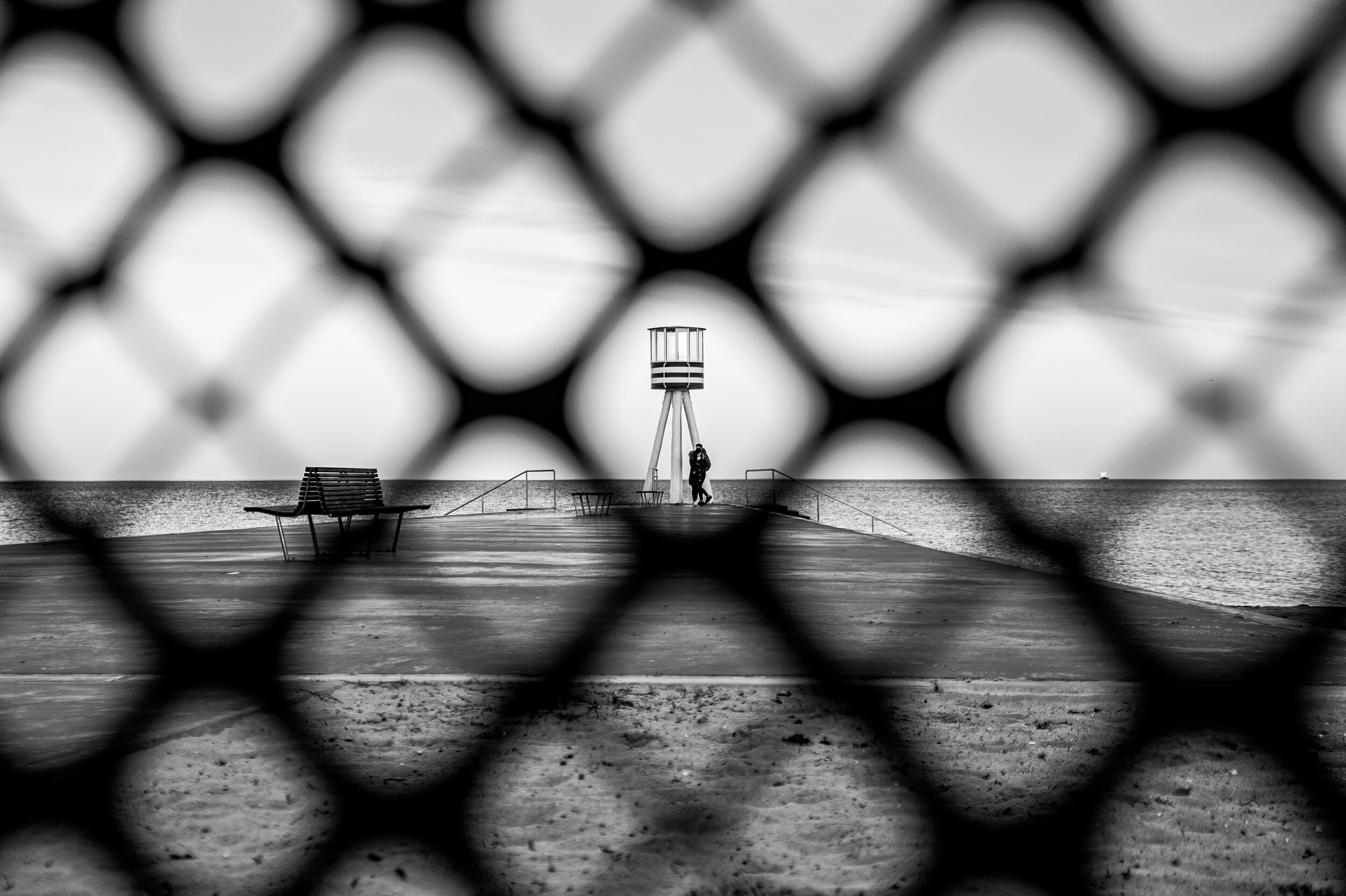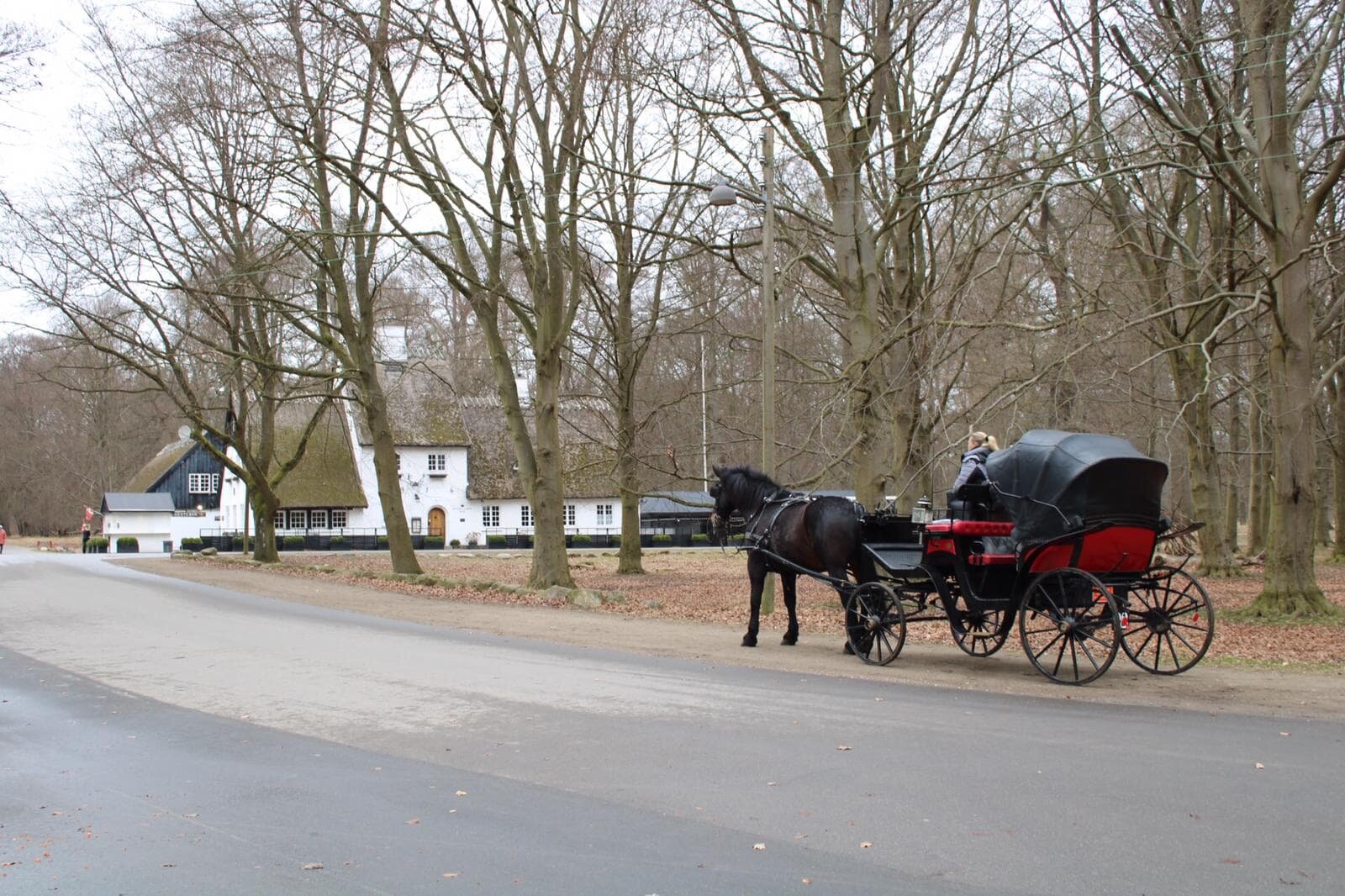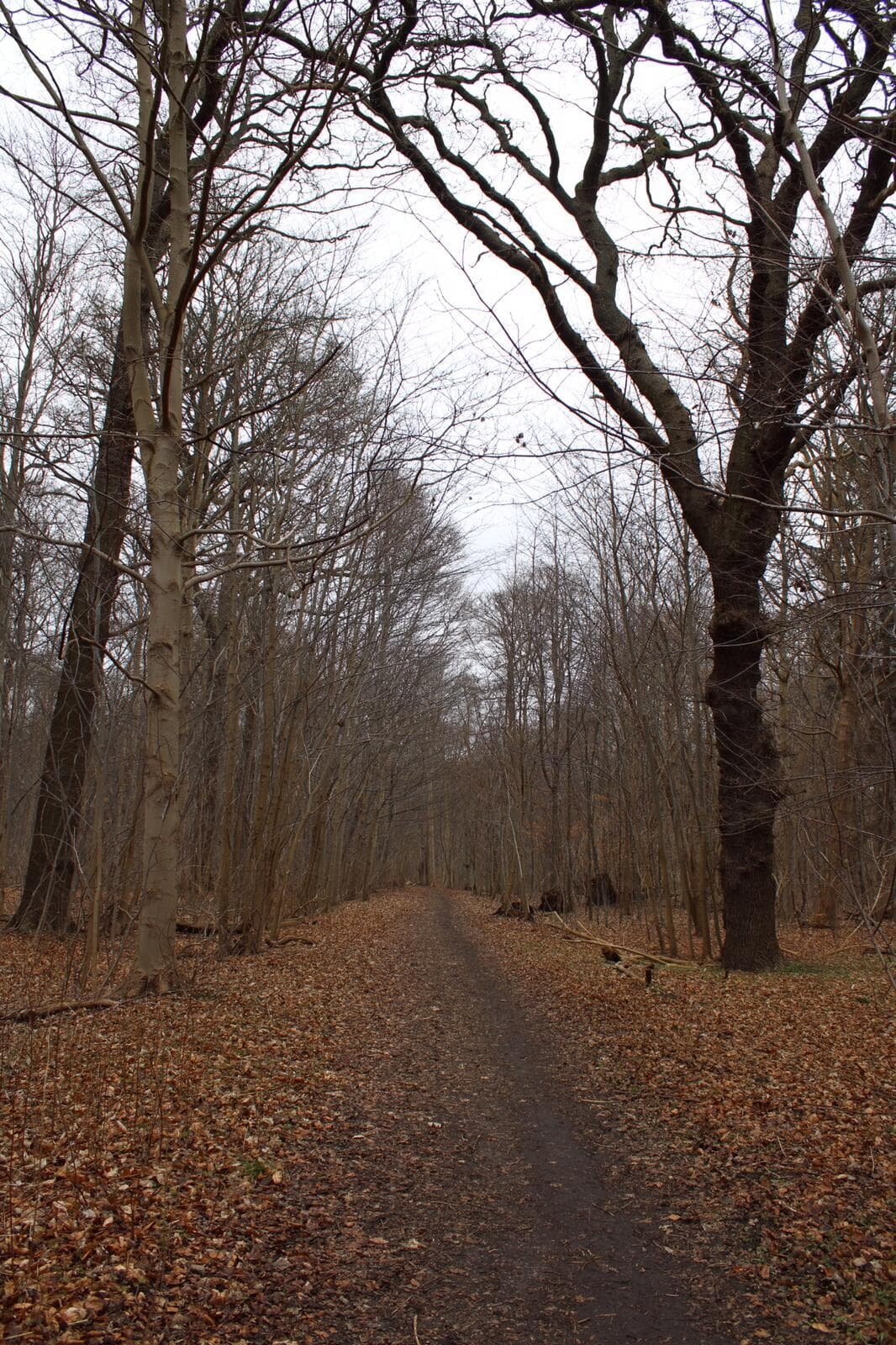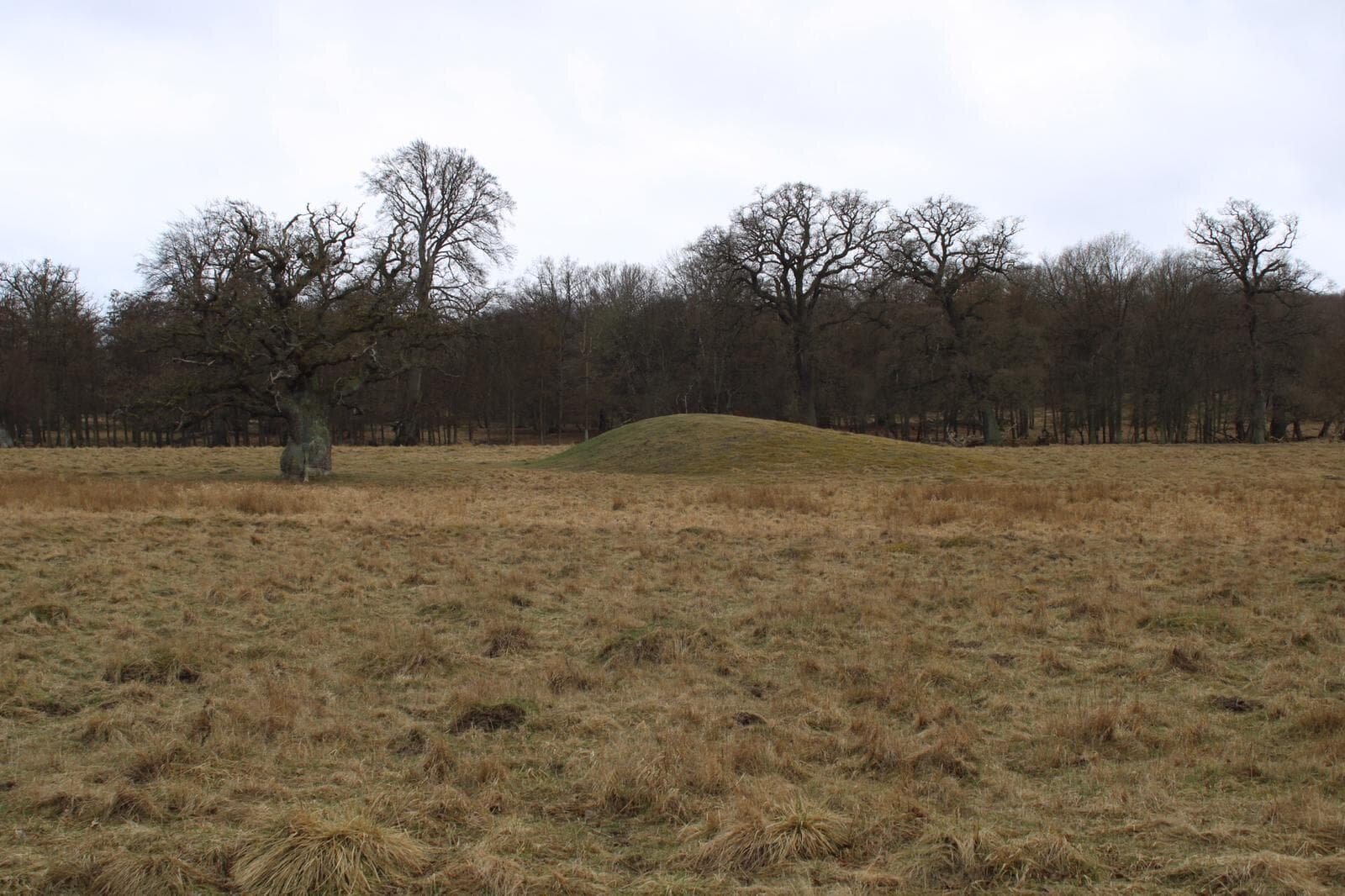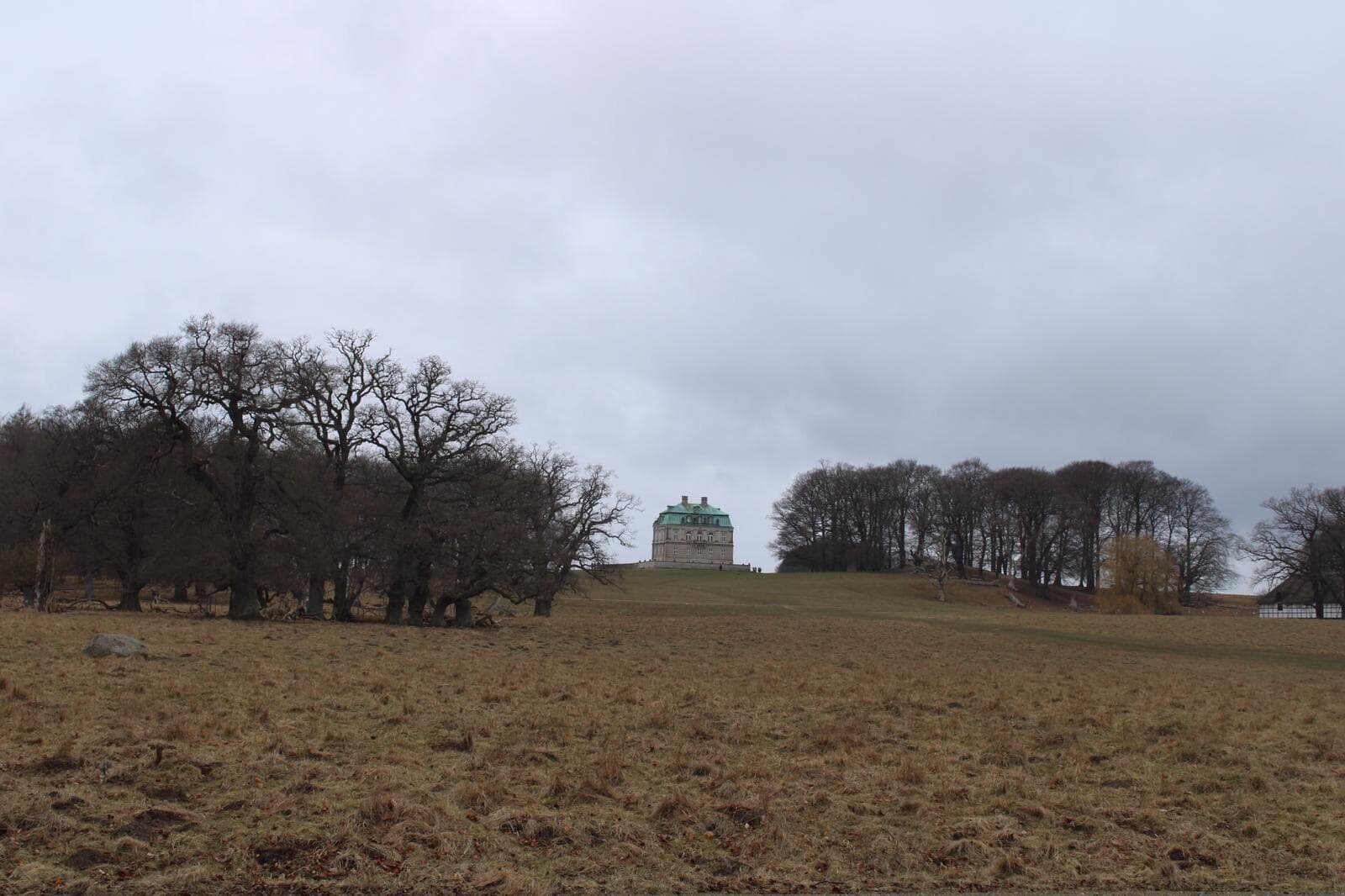Visit Klampenborg - Deer park and Bellevue beach
Climbing onto the S-train one rainy afternoon, I took the 20 minute journey north of Copenhagen to the beautiful surroundings of Klampenborg.
Upon arrival, you are greeted by a 19th century brick train station, with a large wrought-iron colonnade which funnels visitors off the platforms and towards the parkland. On a drizzly March afternoon the scale of this station seemed impressive, if a little unnecessary. Yet after reading a little about the history of Klampenborg, one gets an insight into the town’s popularity as a suburban coastal escape for inner-city Copenhageners (is that a word?) throughout the 19th and 20th centuries.
Historically, the town formed the main gateway to the Jægersborg Deer Park, one of the most popular natural areas in greater Copenhagen, known for its large deer population, the Hermitage Royal Hunting Lodge, extensive prehistoric burial mounds and ancient oak woodland.
Bellevue beach
The town itself is a collection of impressive detached houses and villas clustered around the coastline, home to the wealthy stars and elites of Copenhagen from the 1860s to the present day.
The world-famous Functionalist Danish architect Arne Jacobsen designed a number of these, including Bellevue Beach (pictured below) the Bellavista housing estate and the Bellevue Theatre, all completed between 1932–36 as some of the earliest Danish examples of Modernism.
In the 1930s the right to vacation became a legal requirement in Denmark, and the coastline north of the capital became the country's most popular holiday destination.
The local council, Gentofte, made plans to develop this piece of coast into a seaside resort complex combining an existing park designed with beach facilities catering to some 15,000 paying visitors a day.
Jacobsen won the contract with Gentofte council and designed everything from bathing cabins, lifeguard towers and kiosks to tickets and uniforms for the staff.
My visit was a windy day so I only took a quick tour of the beach - but if you have time I would encourage a thorough exploration of this 1930s gem.
Bellevue beach remains a favourite spot for bathers and tourists alike to enjoy the seaside during the Danish summer.
In June 1932 the Bellevue beach was inaugurated by Danish Prime Minister Thorvald Stauning. It immediately became the most popular summer resort in Copenhagen. A direct return tram ticket from the city to Bellevue, including the beach entrance fee, was at the affordable price of 30 øre (about 5 pence).
The 700 metre sandy beach of Bellevue is characterised by its blue-striped, lifeguard towers and the geometric kiosks of Jacobsen.
Exploring Jægersborg Deer Park
After being buffetted by the wind at Bellevue I made sure to take in the picturesque ‘Gule Cottage’ (yellow cottage) (pictured below), and Skovfogedegen which sit beside the coastline. This mouthful of a word for non-Danes is a hollow oak tree, dated to the year 1200 (ish).
It is named after a Catholic forester who, in the 19th century, used the tree as a prayer chamber, and today it is a favourite spot for kids playing hide-and-seek - it was when I was there anyway.
After my Skovfogedegen pause, I set off at a determined pace in the direction of the deer park, keeping the coastline to my east. I’d soon left the village of Klampenborg behind and was surrounded by dense oak forest, which dampened the sounds of the nearby motorway.
A short 1km walk to the north and I arrived at one of the great red-painted entrance gates which mark the perimeter of the deer park. Each of these is guarded by a picturesque thatched groundskeepers cottage, which I was pleased to see is still inhabited by a smiling, grey-haired couple - although if they are the original groundskeepers from the park’s origin in 1670 I couldn’t say.
The park spans around 11 km2 (4.2 sq mi) and is known for its ancient oak trees, prehistoric burial mounds and large populations of red and fallow deer. In July 2015, it was one of the three forests included in the UNESCO World Heritage Site inscribed as Par force hunting landscape in North Zealand.
A brief history of the deer park
When we’re talking Danish history, it’s always a safe bet that a Frederik or a Christian will be involved somewhere.
In this case it’s a Frederik. Frederik III to be precise, who in 1669 decided that the wood of "Boveskov" ("Beech wood") should be fenced in and wild deer from the surrounding areas driven into the newly created park.
Sadly, Fred passed away in 1670, so it was his son, Christian V, who picked up the baton and carried on his work with the deer park. He had spent time at the court of Louis XIV in France and seen first-hand a type of hunting practice called parforce (hunting with dogs), that he wanted to bring to Denmark for the people to enjoy (as long as those people were elite members of the royal court).
This style of hunting required a greater area of land for its practice, so Christian V increased the boundaries to include the fields his dad had set aside up to the village of Stokkerup.
The poor inhabitants of Stokkerup were ordered to tear down their houses and make use of the materials to rebuild the farms in the area that had stood empty since the Northern Wars. They were compensated for this by having a period of three years during which they were exempt from taxation. I still wouldn’t have been over the moon if it were me in that situation.
Christian V’s parforce hunting in the Deer Park
By all accounts, parforce hunting was pretty nasty. A piece of theatre, popular in the elite society of Europe in the 1600s in which the absolute monarch was the main character.
The riders in his party would don their finest attire, while dogs and horses were carefully selected according to how their colours and markings would blend into the landscape.
It was the king’s mounted hunters and their hounds who pursued the quarry while he sat with his guests and watched the hunters, horses and hounds as they pursued the frantic stag - for most of the day
When the exhausted stag was no longer able to run, the dogs held it fast by biting its throat, ears, legs and muzzle. Thus, the stag was “fixed” and the King was summoned with a special horn signal. He would then arrive with a small hunting sword called a hirschfænger and stab the stag through the heart (source: Parforce.dk).
The meat was unedible due to the build-up of lactic acid from chasing the stag around all day, so it was purely for the theatre that this 4 square mile park was built.
Sadly for Christian (but happily for the deer) parforce hunting was banned in 1777, but the park continued to be used as a private hunting ground for the Danish royalty long after.
An annual parforce hunt still takes place on the first Sunday in November to keep the large numbers of deer stable. During the hunt 700 deer are culled, and around 700 calves are born the following year.
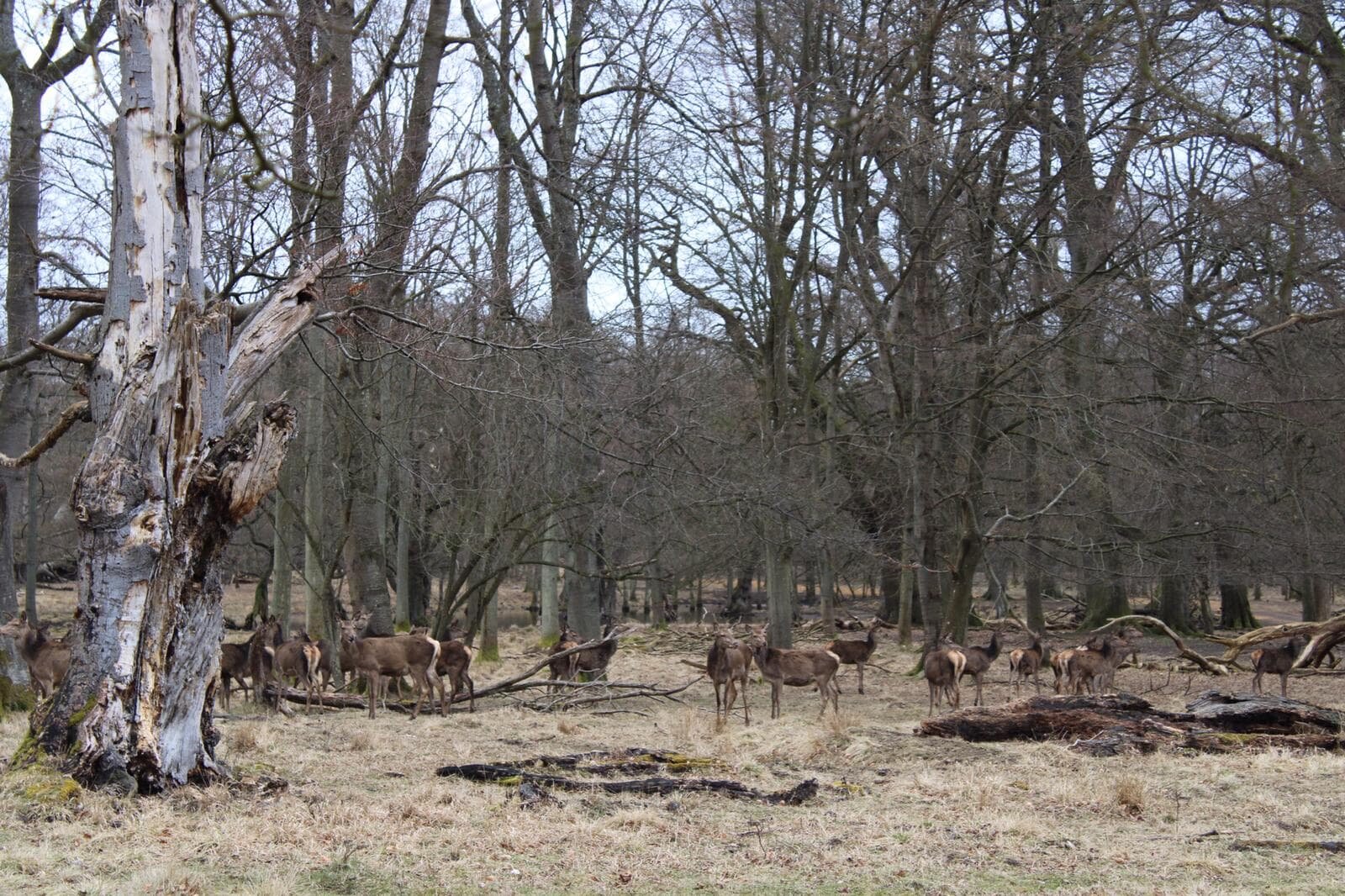


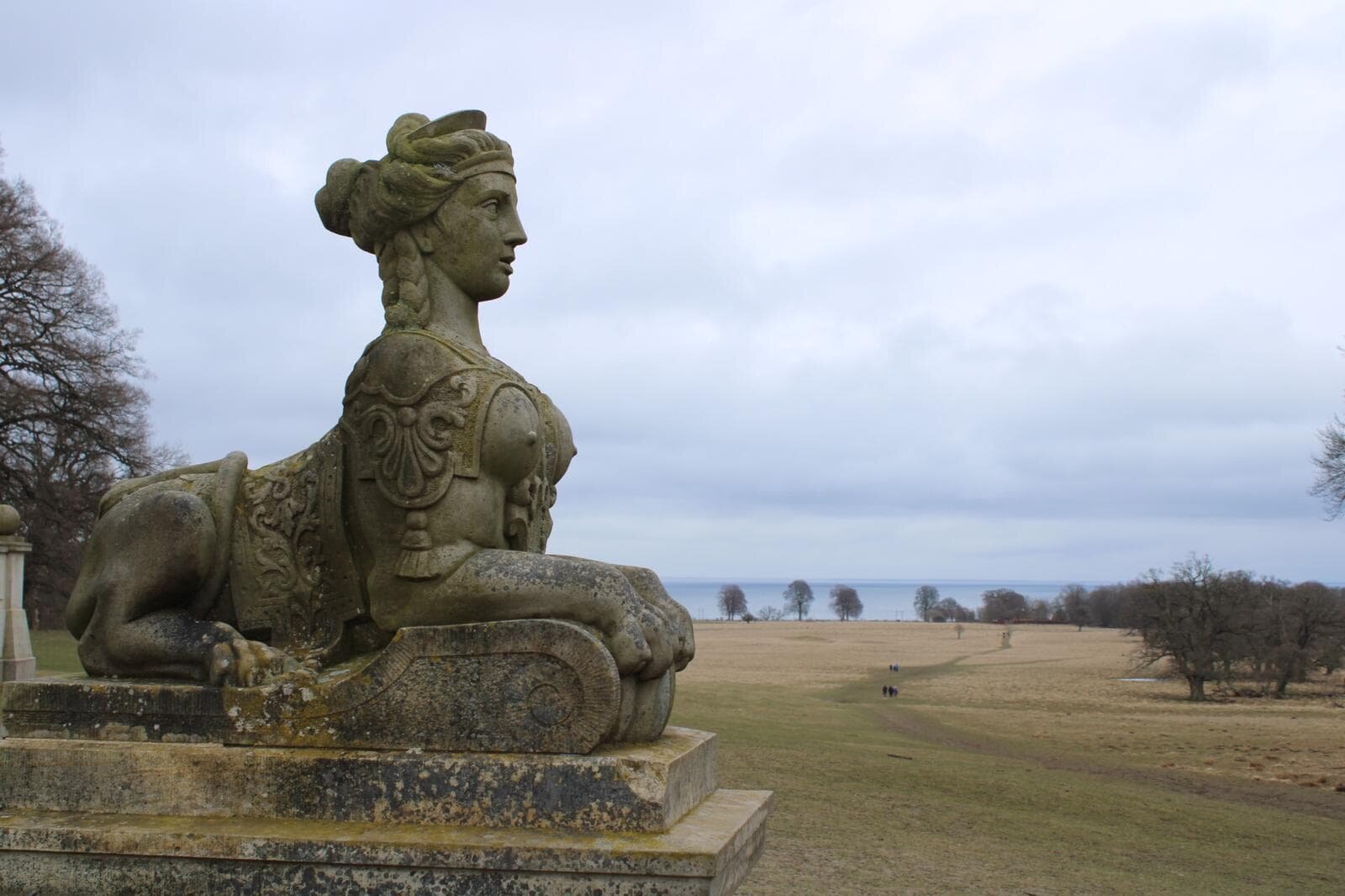
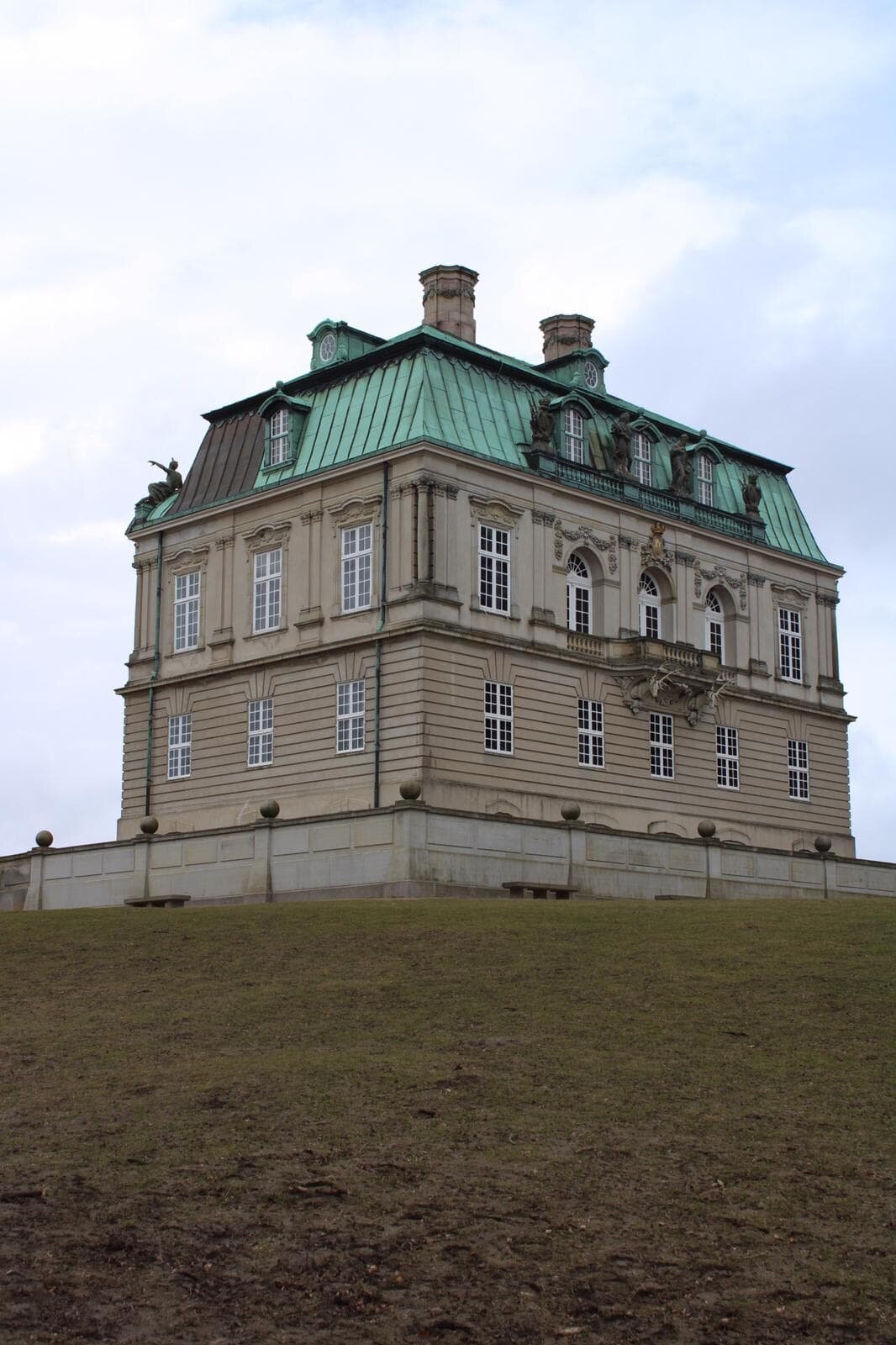
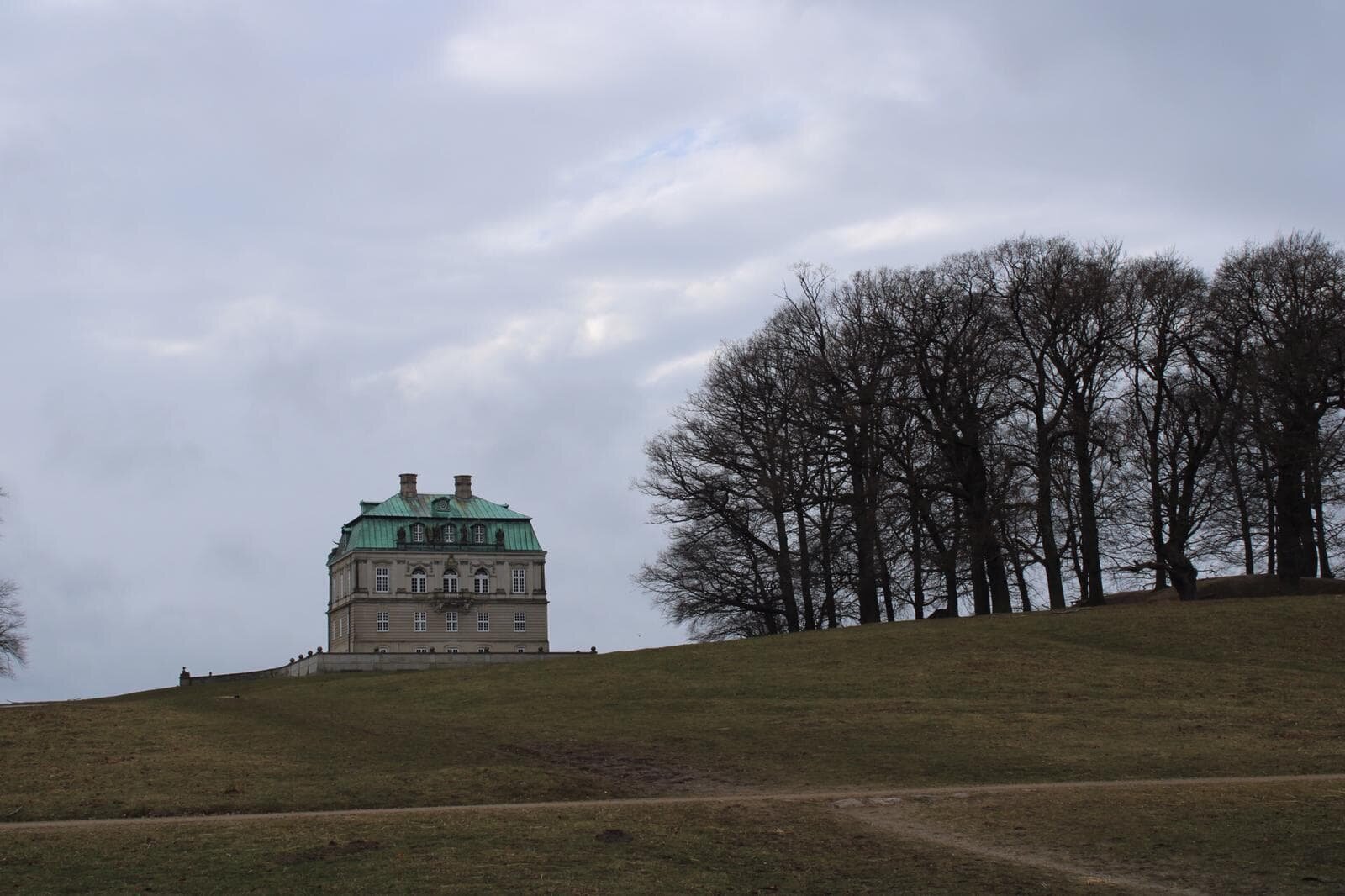
The Hermitage Royal Hunting Lodge
I continued through the open parkland, my sights set on the Hermitage Royal Hunting lodge which was built in the centre of the park.
Completed in 1736, it was a place that the king would use as a place of respite after a strenuous hunt, and where he would entertain distinguished guests with great feasts.
I will cover the Hermitage in a forthcoming blog article (it deserves its own piece), but suffice to say that it is hardly the modest hunting lodge I was expecting.
Looming over the parkland and with commanding views down to the sea, the baroque masterpiece squats on a hillside, surveying us commoners with a disapproving gaze.
As the drizzle began to slowly stop, I ascended the slope and explored what I could see of the Hermitage. It was of course closed in Corona times, but tours are usually available for guests to explore the building’s amazing Baroque interiors too.
Heading due south from the Hermitage I passed swathes of ancient oak woodland, dotted here and there with prehistoric burial mounds and earthworks. There are about 80 burial mounds, most of which are from the Bronze Age.
Frederik VII was extremely interested in these ancient mounds, and named his summer house in Skodsborg ‘Solhøj’ after the golden sun disk which he himself found in one of the burial mounds in 1863.
There are approximately 1,600 fallow deer, 300 red deer and 300 sika deer in the park. Pausing to take in some of these herds of nonchalant deer, I carried on, drawn by the sounds of shouting children and clunking rollercoasters which, in recent months, hadn’t been heard for a while.
Dyreskovsbakken - aka Bakken Amusement Park
The area to the south of a park where I was now heading is called ‘Bakken’, (meaning ‘The Hill’) and is the source of a natural spring. It became a popular site for the general public since it was ‘opened’ in 1583, with entertainers and traders selling their wares from stalls and wagons in the area. This makes the park 260 years older than its famous cousin down the road, Tivoli, and officially the oldest operating amusement park.
Sadly for them, Bakken and the deer park was off-limits to the general public under Christian V and this did not change until 1756, under Frederick V.
The reopening rekindled the interest in Bakken and it grew in popularity throughout the 18th and 19th centuries, later aided by easier accessibility due to the development of steamships (1820) to Bellevue beach and railways (1864) to Klampenborg station where I had arrived.
Cabarets such as Sansouci, which opened in 1866, and Bakkens Hvile, which opened in 1877, became popular. The 20th century brought other popular ventures, such as the Circus Revue and automated moving rides. Over time, more modern rides, rollercoasters, arcades and entertainment options have been introduced, including a still-operating wooden rollercoaster from 1932.
I stayed to take in the picturesque roadside inn beside the entrance to the Bakken park, before retracing my steps down to the station 200 metres to the east.
Some practical info for your trip to Klampenborg
The park is open 24 hours a day and entirely free.
Toilets
There are toilets at Klampenborg station, outside The Hermitage and inside Bakken Amusement Park.
The toilets at Klampenborg station cost 5kr. The machine only accepts credit or debit cards.
Food & Drink
The Deer Park is a perfect place for a picnic, but if you prefer hot food or a cold beer, there's plenty of choices.
When Bakken is open, there are plenty of restaurants and bars inside the amusement park.
Getting there
The Deer Park, or Jægersborg Dyrehave as shown on Google Maps, is just 20 minutes by train from Copenhagen.
Take the C train heading north to Klampenborg - just stay on the train as it’s the last stop on the line.
You can hire a bike from the station and take it around the park and beach.
Follow the road behind the toilets slightly uphill and turn left at the top.
The red gated entrance is just 450 metres from the station.

